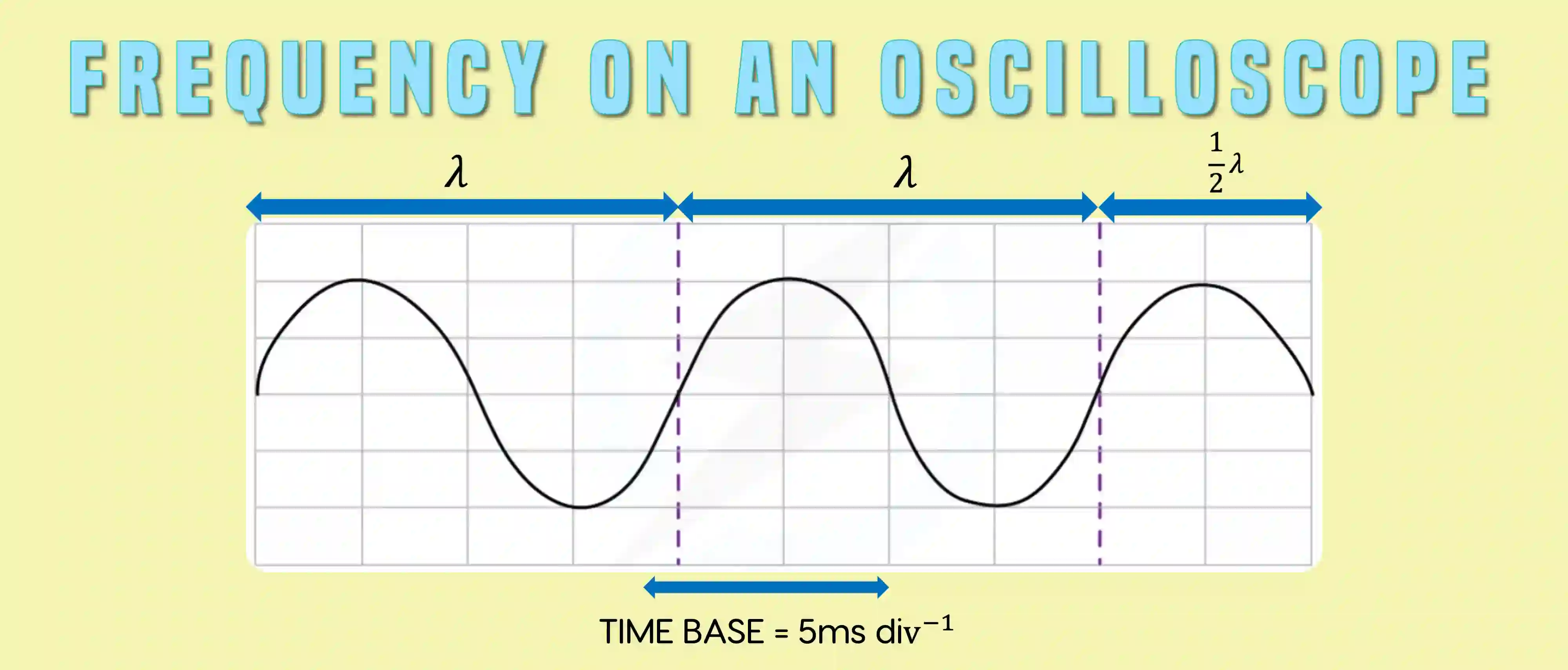If you are having trouble understanding how to read the cathode ray oscilloscope graph, you’re in the right place. Cathode ray oscilloscope (CRO) MCQs are abundant in IGCSE and O Level Physics past papers and we don’t want you to miss out on these easy marks. Dive into our guide below where we walk you through how to read oscilloscope waveforms.
What is a Cathode Ray Oscilloscope?
A simple way to explain the cathode ray oscilloscope is that it is a tool used to analyze wave characteristics. It allows us to display the waveform of a signal and hence compute its frequency and amplitude (voltage).
Working principle of Cathode Ray Oscilloscope:
-
The cathode ray oscilloscope displays the signal as a transverse wave.
-
The y-axis of the CRO display represents the voltage or y-gain
-
The x-axis of the CRO display represents the time. It is adjusted using the time-based control.
Applications of Cathode Ray Oscilloscope:
The cathode ray oscilloscope can be used to find the frequency and voltage of an electrical signal or a wave.
How to Read Frequency on an Oscilloscope?
Here is a step-by-step guide to calculating the frequency of a wave being displayed on the Cathode Ray Oscilloscope:
- Count how many divisions of the x-axis make up one entire wavelength of the wave, as shown in the diagram.
- Multiply the number of divisions from step 1 by the time-base setting to calculate the period. For example, if the wavelength is 4 divisions of the x-axis and the time-base is 5ms/div, the period of the wave is 4 div 5 ms/div = 20ms.
- Calculate the frequency by using the formula f = 1T. For example, if T = 20ms, f = 120 10-3s = 50 Hz
*Watch out: Don’t forget to convert the time to seconds before doing the frequency calculation!
Conclusion
We hope that after reading this IGCSE and O Level Physics guide, you are clear on what Cathode Ray Oscilloscope is and the workings of Cathode Ray Oscilloscope on how to compute the frequency of a wave using its display.
Just like CRO questions, many commonly repeated questions in O Level and IGCSE Physics exams can be tricky to grasp at first. This is why we have included past paper practice sections at the end of each chapter in our expertly curated IGCSE and O Level Physics crash course. Check it out here!
FAQS:
Q. What are the applications of Cathode Ray Oscilloscope?
The cathode ray oscilloscope can be used to find the frequency and voltage of an electrical signal or a wave.
Q. What does a Cathode Ray Oscilloscope measure?
A cathode ray oscilloscope is used to analyze wave characteristics. It allows us to display the waveform of a signal and hence measure its frequency and amplitude (voltage).



